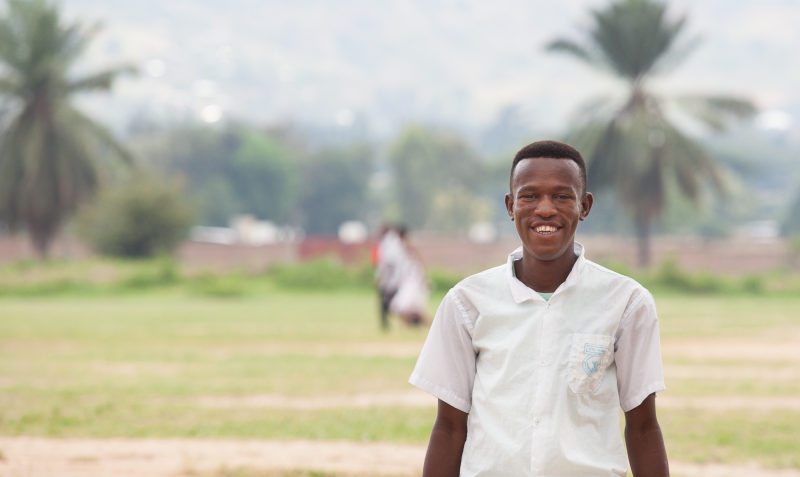HIV, violence, blame and shame
 © Frontline AIDS
© Frontline AIDS
To address internalised HIV stigma we must reduce the widespread maltreatment and violence against people living with HIV.
Marija Pantelic, the lead author of the research paper featured in this blog, is a senior advisor for research and evaluation at the Alliance.
Findings from a new research paper suggest that to address internalised HIV stigma, we must reduce the widespread maltreatment and violence against people living with HIV.
There are an estimated 2.1 million adolescents living with HIV worldwide and 85% of them live in sub-Saharan Africa. Between 2005 and 2015, AIDS-related deaths more than doubled in this age group, despite declines in other age categories.
We have known for a long time that HIV-related stigma severely hampers uptake of HIV-related prevention, treatment and care services, and therefore poses a serious threat to our ambition of ending AIDS.
Different types of HIV stigma
Whilst there are various ways in which people living with HIV can experience stigma, researchers and programme developers have mostly focused on understanding and addressing discrimination, or enacted stigma, which is when people living with HIV are treated differently or denied opportunities because of their HIV status.
Less visible and perhaps more difficult to capture is internalised stigma which occurs when a person living with HIV internalises perceived negative attitudes and accepts them as applicable to themselves. This invokes strong feelings of shame and worthlessness and can lead to suicidal thoughts.
Internalised HIV stigma is an important risk factor for poor health outcomes among adolescents living with HIV. It undermines retention in care and hampers adherence to anti-retroviral treatment, which can lead to viral failure and death.
This is concerning, particularly as data from Argentina, Cambodia, Kenya, Russia, South Africa and the present study consistently suggest that people living with HIV are (up to three times!) more likely to report experiencing internalised HIV stigma than discrimination.
Current interventions not adequate to meet the need
How we address internalised stigma depends on what we know about the process by which it comes about.
Internalised stigma is commonly seen as a purely psychological process, strongly associated with poor mental health. As such, most interventions aiming to address internalised HIV stigma are delivered in clinical settings to small groups of people living with HIV, aiming to strengthen people’s self-image through empowerment messages and psychological support.
However, it is unlikely that we will be able to scale up such small-scale interventions to adequately support the 36.7 million people living with HIV globally.
Moreover, many adolescents and key affected populations are already struggling to access healthcare because of fear of stigma and judgement in healthcare facilities. Asking them to congregate in group sessions specifically designed for people living with HIV comes with expectations to disclose their status to everyone present, which many may not be ready or willing to do.
In addition, from an ethical point of view, it could be said that clinical and psychological responses to internalised HIV stigma are applying a victim-centric approach to a public health problem.
What drives internalised stigma?
In the paper HIV, violence, blame and shame: pathways of risk to internalized HIV stigma among South African adolescents living with HIV we aimed to examine whether and how community and family-level dynamics contribute to the production of internalised HIV stigma.
Findings partly confirmed what previous research suggested, i.e. that individual factors, namely poor HIV-related health and psychological distress, contribute to internalised HIV stigma.
But we also found that experiences of physical and emotional violence within homes, schools and communities play an important role in shaping adolescents’ sense of self and contribute to internalised HIV stigma.
Specifically, adolescents with HIV-related disabilities are at highest risk of maltreatment by family, peers and community members, which in turn leads to psychological distress, fuelling internalised HIV stigma.
Addressing the source of internalised stigma
What does this mean for our programming?
First, we need to pay more attention to internalised HIV stigma. We also need to be more creative about how we respond to it. Internalised HIV stigma is experienced by people living with HIV but this does not mean that interventions should put the entire onus of change on them.
Helping people cope and boosting their self-esteem may be an important component of tackling internalised HIV stigma. However, focusing solely on this is similar to treating a symptom without treating the source.
We must address the source of internalised HIV stigma: the widespread maltreatment and violence that people living with HIV are often subject to.
Finally, more research is needed to further unpack internalised HIV stigma, as our understanding of it is still in nascent stages. Programmes aiming to address internalised HIV stigma should be accompanied with rigorous research and evaluation strategies.
We cannot afford to remain uninformed about internalised HIV stigma, whilst it continues to undermine our efforts to end AIDS.
Read the original open access article in the Journal of the International AIDS Society.
This article was written as the International HIV/AIDS Alliance, before we changed our name to Frontline AIDS.
Tags
Stigma and discriminationYoung people


